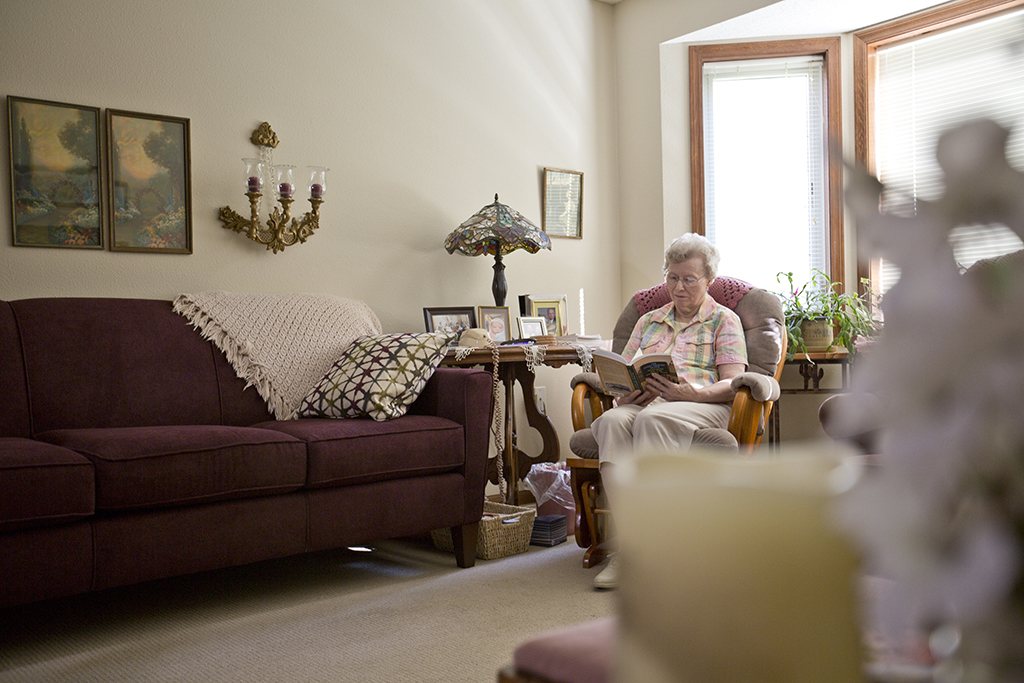Submitted by Kara Webb Monson, RN, Silveridge Assisted Living Manager
The winter months can be difficult for all of us… but they do not have to be! There are ways we can try to stay healthy when the temperatures drop to sub-zero.
Even with all of today’s technology and advances in medicine, the reason the flu is more prevalent in the winter months is still unclear. An obvious theory is the return of children to schools which is basically an opportune congregation of a variety of pathogens which are then in turn brought home and passed along. We then potentially carry them with us to other common places, such as the supermarket, the local café, and even to our place of work.
While this still does not explain how the pathogens reached the children in the first place, it is obvious why it is important to try and focus on preventing their transmission. For a pathogen to pass on to someone else there actually is a quite complex cycle that must occur. If any part of that cycle is broken, the pathogen is unable to be transmitted.

- First we must have the organism, which in this case I’ll use Influenza A.
- Next we need a reservoir, or carrier, of the organism. We’ll call her Sally.
- The organism needs a way out of Sally in order to infect someone else. I’m going to use Sally’s mouth and nose. Sally covers her mouth and nose as she sneezes into her hands while eating lunch at the local buffet.
- After sneezing, Sally decides she wants to dish up a bowl of ice cream before leaving. She takes a clean bowl from the stack and uses the handle on the ice cream machine to load it up. Influenza A is now on the handle of the ice cream machine.
- Bobby is in line to get ice cream after Sally. He puts his hand on the handle and loads up his bowl. Influenza A has now been transmitted to Bobby’s hand without his realization.
- Bobby sits down at his table and realizes he filled his bowl a little too full and it’s overflowing. He takes his finger and wipes the excess and licks it from his finger. The pathogen now has its portal of entry.
- Bobby’s immune system hasn’t seen this particular pathogen before and he didn’t have his flu vaccine yet, so the pathogen has found its vulnerable host. The chain of infection is complete and Bobby is now infected with Influenza A.
If just one part of this cycle would have been broken, Bobby wouldn’t have been infected. If Sally would have sneezed into her elbow instead of her hand, for example. Or say she didn’t, but Bobby would have washed his hands after getting the ice cream or refrained from using his finger to wipe up the excess on the bowl and instead used his spoon. This time of year, it is crucial to always be mindful of what could be lurking on surfaces and practice good hand hygiene. After all, handwashing is the number one way to prevent transmission.
Some other healthy tips for winter:
- Know when to stay home. If you have a fever (100 degrees +), are vomiting, or have loose stools is it best to stay home! Practice good hand hygiene and use disinfectants on common surfaces.
- Drink extra fluids. Our body’s thirst is drastically reduced when the weather is cold. Do not confuse this is a lack of need for hydration. The average adult should consume eight 8oz glasses of water each day unless contraindicated.
- Winter air is dry so it’s important to keep skin hydrated. Our skin is the largest organ of the body. One of its most important roles is it protects us. During colder months our skin can become dry resulting in cracks or openings. These tiny openings are potential portals of entry for pathogens. By using a daily lotion or moisturizer we can help prevent this.
- Stay up to date on vaccines.
- Maintain a balanced diet.
- Keep in touch with family and friends and be sure to get a little sunshine every day. Cold winter months can sometimes bring about seasonal emotional and psychological problems. It is important to stay social and to get your daily supply of Vitamin D. Do not be afraid to reach out to your health care provider if you are feeling blue.
Unfortunately, unless science or God created a pathogen-free Earth, we will always need to protect ourselves from everyday illnesses. Because many forms of bacteria are beneficial, we actually would not want that to occur. As demonstrated with Sally and Bobby, illnesses can be spread pretty easily. Simply by educating yourself and your loved ones on methods to prevent the transmission of harmful organisms could mean the difference between a bad winter and a good one.

